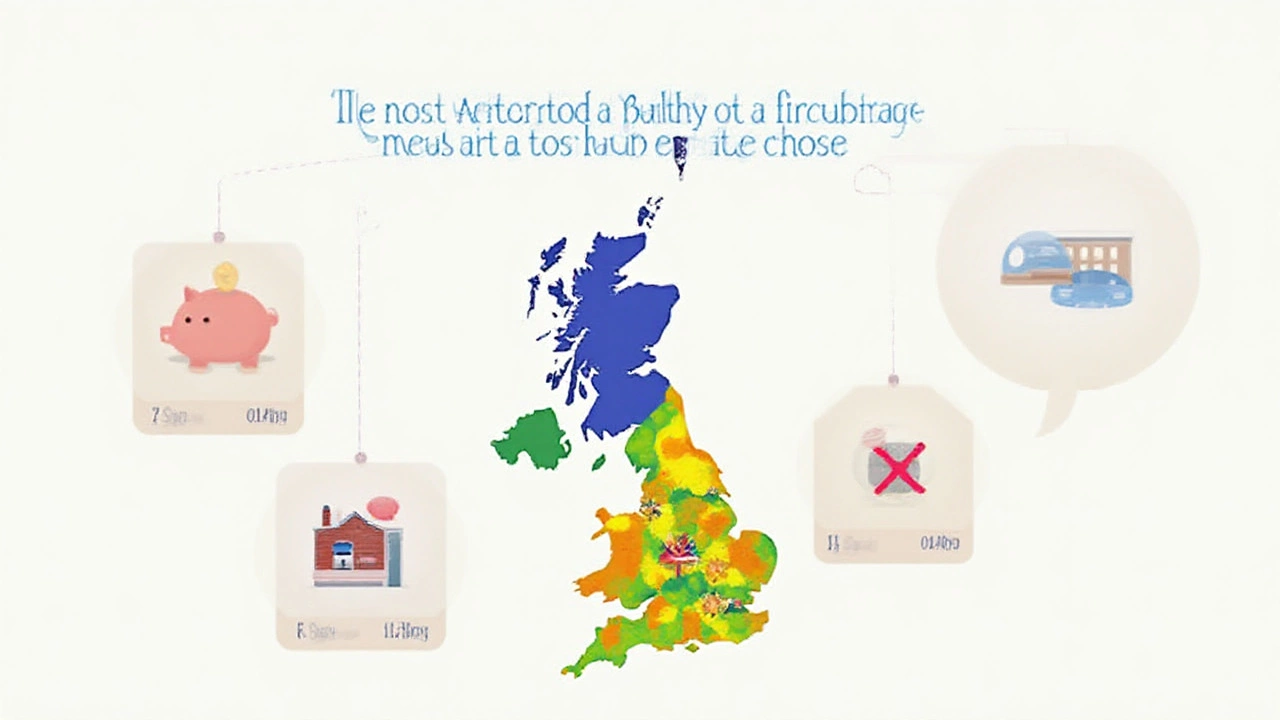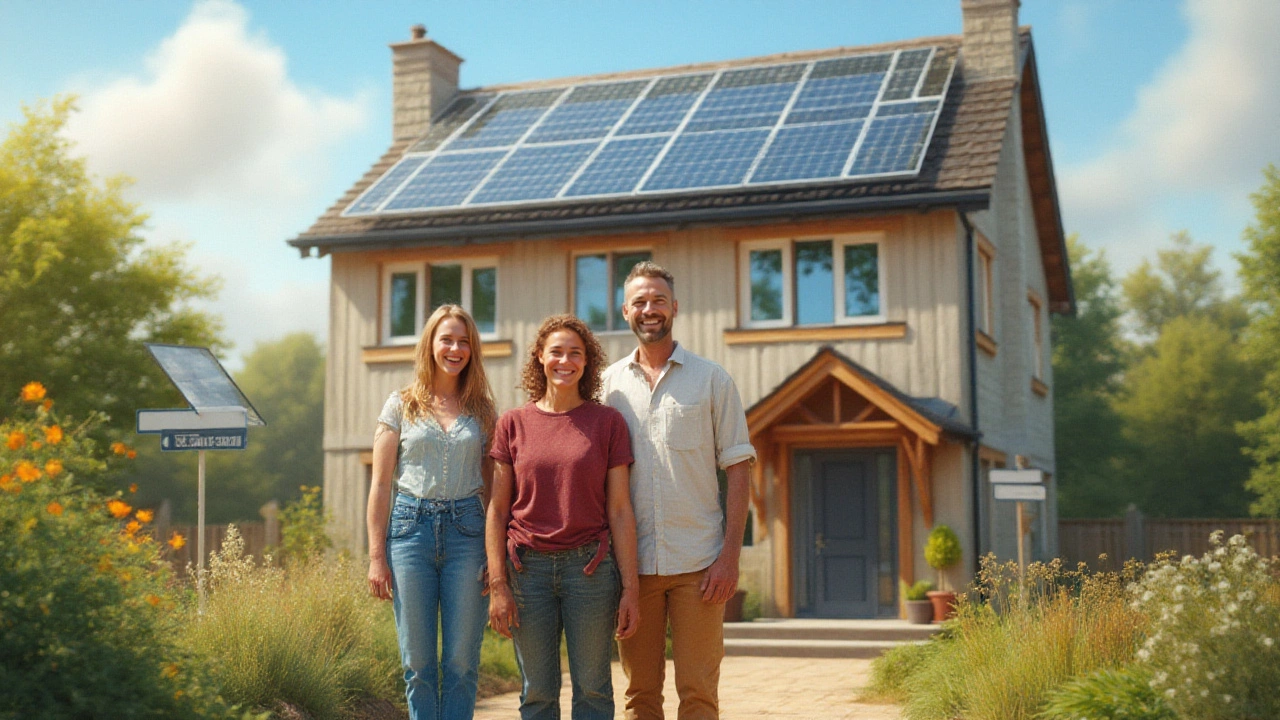Cheapest States to Build a House in 2025: Where Your Dollar Goes Furthest

If you think building a house is just about finding the perfect lot and picking paint colors, let’s blow your mind. Cost varies like you wouldn’t believe—some states make your dollar stretch while others chomp right through your savings, fast. As someone who once argued with Gareth over whether the kitchen tile or the roof mattered more (spoiler: it’s both), I’ll spill what really skews the price, which state is the real bargain, and how to dodge those sneaky expenses builders rarely mention.
Why Building Costs Vary: It’s Not Just About the Land
People love to obsess over lot prices, but there’s more to the story. Sure, that $15,000 chunk of land looks charming on the listing site, but do you know if it’s even buildable? Swamps, wildfires, hurricane risk—it all matters. But the real cost swings come after you’ve bought the dirt. Labor, permits, building codes, utility connections, and how close your nearest Home Depot is—all these things decide whether you can actually afford to put up walls, or wind up sleeping in a shed (which, trust me, is less romantic than Pinterest thinks).
Here are a few of the biggies:
- Labor Rates: States with booming cities (think California or New York) have super high wages for workers. In places like Oklahoma and Mississippi, the labor rates are lower because the overall cost of living is down.
- Material Costs: Transportation kills the budget. If you’re hours away from a real city, expect the cost of lumber, concrete, and windows to jump. Southern states often win here, because suppliers are close by and there's less snow to mess up deliveries.
- Building Codes and Permits: Some places let you build with little paperwork and lower standards (hello, no-fuss Texas towns), but others—like Oregon’s eco-friendly cities—require pricey upgrades for energy efficiency, rainwater catchment, and more.
- Land Preparation: A flat clearing is cheap. Blasting rock or draining a marsh? Wallet alert!
- Utilities: Hooking up water, septic, and electricity can bail out or bankrupt a project. Wyoming’s big open spaces look gorgeous, but if you’re miles from a main road, those utility lines cost a fortune to run.
Let’s look at the numbers. The table below shows the average cost-per-square-foot to build a basic, stick-built home in the cheapest states, based on real 2025 data from the National Association of Home Builders and homebuilder surveys.
| State | Avg. Cost Per Sq Ft ($) | Median Land Cost (1 acre) | Common Permit Fees | Estimated Total Build (2,000 sq ft home) |
|---|---|---|---|---|
| Oklahoma | 108 | 7,500 | 2,500 | 223,500 |
| Mississippi | 113 | 9,000 | 2,800 | 237,800 |
| Arkansas | 116 | 8,300 | 2,950 | 244,250 |
| West Virginia | 120 | 7,000 | 2,600 | 247,600 |
| Alabama | 122 | 9,050 | 3,000 | 256,050 |
Oklahoma snags the crown for cheapest state to build a house in 2025. The low labor and land combine with a nice balance of relaxed building codes—so you don’t spend all winter waiting for a permit to hang drywall.

Breakdown: Cheapest State to Build a House in 2025
Oklahoma is quietly becoming a budget builder’s paradise. If you’re picturing a wild, windswept prairie and tumbleweeds, you’re not totally wrong, but it’s more than that. Tulsa and Oklahoma City are steadily growing, which means you get access to urban conveniences and supply chains, but still nab land for a song. Builders in Oklahoma usually charge at least 30% less per square foot than those you’ll find along the coasts.
I called around to real builders and realtors in Norman, Oklahoma (try saying that without putting on a country accent). They told me most folks choose basic ranch-style plans—no odd angles, no wild modern shapes, which keeps costs down. If you want a brick facade, expect to add about $15,000. Two-car garages bump the price by $20k, but you’ll appreciate it when hail season rolls around. Builders here are pros at working with slab foundations—cheaper than basements anywhere in the Midwest or Northeast.
Building codes in Oklahoma are hands-off about upgrades you see in fancier states—there’s no hard push to go all-in on green tech unless you’re just into that. If you want solar panels, add about $14,000 to the budget, but nobody will force you to do it. Permit offices process simple single-family home plans in a couple weeks (sometimes even in days, if you flash a smile or bring a box of donuts to the counter—locals say it works, honest).
Landscaping matters, too. In Oklahoma, lots aren’t covered in old-growth trees, so you save on clearing fees. But you will need to think about tornado safety. Most cheap new homes come with a reinforced interior room (basically, a closet with extra-thick walls) instead of a full below-ground storm shelter, but you can upgrade for $8,000 if you want more peace of mind. Insurance rates are reasonable, though they do spike if you build in tornado alley. Ask your builder about using impact-resistant shingles—they add maybe $2,000 but are worth every penny during hailstorms.
Here’s something Gareth found that I would have missed: Public schools in low-cost build states can be hit-or-miss. If you’re planning to stay put with a whole family, research districts. Some Oklahoma suburbs (Edmond, Jenks) have strong public schools, which pumps up your home value.
Beyond Oklahoma, Mississippi runs a close second, especially in smaller towns outside Jackson. Just pay attention to flood zones. Arkansas and West Virginia are top contenders, too, but land prices in hilly areas can hide nasty surprises—like septic woes, or shale bedrock that’ll wreck an excavator budget.

Tips and Hidden Fees: How to Keep Building Cheap
People often dream up their forever house on paper, but builders joke that a third of any home budget goes to stuff no one ever sees. Hidden fees and unexpected surprises eat away at every budget, no matter the state. So how do you avoid them?
- Pick simple layouts. Straightforward floorplans save you thousands—think of square designs over sprawling multi-wing homes.
- Avoid unnecessary customizations. Built-in wine cellars and custom staircases look gorgeous but cost a fortune. Stick with stock cabinets, standard tubs, and basic finishes. You can always upgrade later.
- Investigate soil and drainage before closing on land. Some ‘cheap’ lots are cheap for a reason—fixing water or soil issues can add $20,000 or more after the fact.
- Don’t forget about utility fees. Even in Oklahoma, rural water or electric companies sometimes charge thousands for hookup, especially on lots never developed before.
- Ask about tax incentives or first-timer programs. Some states (including Oklahoma and Alabama) have 2025 homebuilder credits if you use energy-efficient appliances, or build in specific counties.
- DIY when smart—be honest about your skills, and only take on tasks that won’t delay inspection or void warranties, like painting or basic landscaping.
- Check county property taxes. Some cheap land comes with higher-than-you’d-think annual taxes. Ask for last year’s receipts, don’t just trust estimates.
- Pile in the insulation, even if codes don’t require it. Your heating and cooling bills will thank you every season. Old-school builders sometimes skimp here, but don’t let them.
- Find out if builders pass along bulk savings. Some will let you piggyback on their big supplier orders, while others stick you with piecemeal retail costs. Ask before signing anything.
If you’re building on a strict budget, don’t wait to check these things until after you start. Construction delays due to missing paperwork, weather, or labor shortages can add hundreds per day. Get your ducks in a row, right down to the last permit and utility stub-out.
One surprise people love? Modular and pre-fab homes are getting a lot more stylish. In Oklahoma, Mississippi, and beyond, serious builders are now offering modular homes at $70-$90 per square foot. These houses zip together fast, can be up in less than six months, and save loads on labor. Just double-check your local zoning and HOA rules—some neighborhoods don’t allow pre-fab, for reasons no one truly understands. But if you get a green light, it’s a huge money-saver and avoids a ton of weather delays.
At the end of the day, the cheapest state to build a house is really about more than just land cost. It’s where your money buys you the right mix of straightforward rules, affordable workers, decent materials, and a community you feel good in. Oklahoma’s been quietly winning this race for years, with lower costs, a boom in new-home infrastructure, and just enough city life mixed with friendly rural charm. But keep your eyes open—what saves money now is being willing to get local, ask questions, and plan like a contractor. That’s how you build not just a house, but a home that didn’t drain your bank account or your sanity.